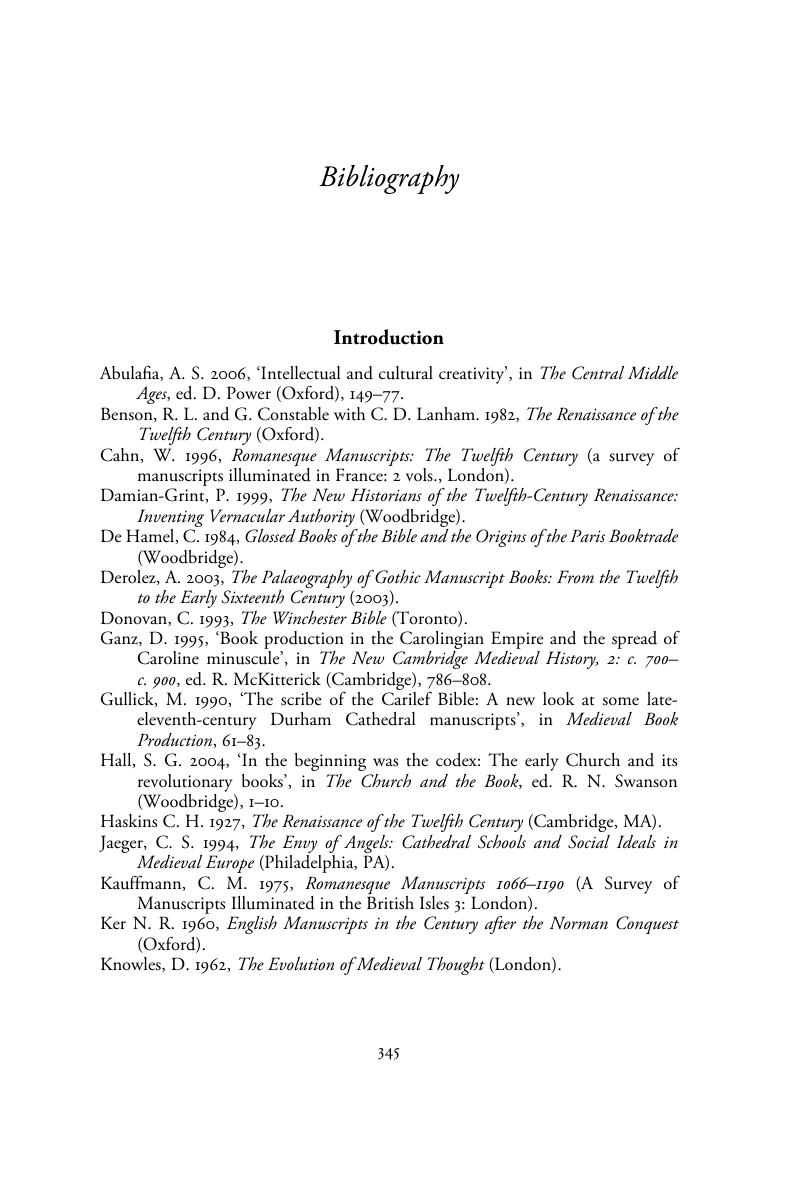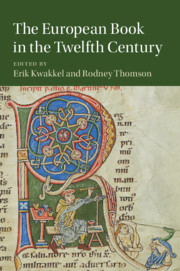Book contents
- The European Book in the Twelfth Century
- Cambridge Studies in Medieval Literature
- The European Book in the Twelfth Century
- Copyright page
- Dedication
- Contents
- Figures
- Contributors
- Preface
- Abbreviations
- Introduction
- Part I Book Production
- Part II Readers and Their Books
- Part III Types of Books
- Bibliography
- Index of Manuscripts
- General Index
- Cambridge Studies in Medieval Literature
- References
Bibliography
Published online by Cambridge University Press: 03 July 2018
- The European Book in the Twelfth Century
- Cambridge Studies in Medieval Literature
- The European Book in the Twelfth Century
- Copyright page
- Dedication
- Contents
- Figures
- Contributors
- Preface
- Abbreviations
- Introduction
- Part I Book Production
- Part II Readers and Their Books
- Part III Types of Books
- Bibliography
- Index of Manuscripts
- General Index
- Cambridge Studies in Medieval Literature
- References
Summary

- Type
- Chapter
- Information
- The European Book in the Twelfth Century , pp. 345 - 393Publisher: Cambridge University PressPrint publication year: 2018

